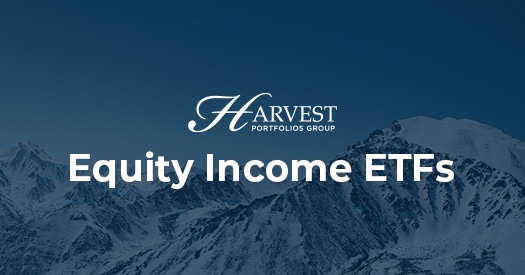By Harvest ETFs

On the bear side, interest rates are rising as central banks pull back hard to tame inflation—risking a worsening recession as a result. Geopolitical tensions also remain highly elevated with outcomes unpredictable. On the bull side, leading indicators of inflation have showed some signs of peaking, investor sentiment is weak and valuations for some companies look attractive.
“The challenges that many investors and advisors face haven’t really changed from earlier in the year,” said MacDonald, “The data we’re seeing points to a condition somewhat like investor purgatory, in which we will need the passage of time and macro data that indicates stability before real positivity can resume. However, we have some catalysts, some valuation metrics, and some contrarian indicators like sentiment could turn out as positives for the market.
“The macro environment remains cloudy. We need some clarity on economic data and to see corporate earnings and guidance to start to meet expectations.”
The Investor’s Dilemma
Rate hikes sit at the core of challenges facing investors today as they impact equity and fixed income products. While there hasn’t been an outright ‘capitulation’ in equity markets, MacDonald acknowledges that there has been heightened volatility for stocks. While traditional defensive equity areas are somewhat down, relative to broad market performance they have offered some protection.
Fixed income assets have arguably struggled more during the recent cycle of rate increases, dropping in value at a time when their promised ‘uncorrelated returns’ should be helping to preserve capital.
In any market, volatility has become the norm. In 2022 so far, we have had seven 4% down days on the NASDAQ—a good proxy for equity risk—between 2012 and 2019 we had three. Investors need a way to offset or monetize some of that volatility.
Signs of Hope
MacDonald’s case for the bulls boils down to three key points: inflation seems to have begun its downward trend, valuations have become more attractive, and sentiment is down.
CPI data out of the United States and Canada does show inflation coming off its peak. Improvements in supply chains and commodity prices also point to some relief. However, we still have very little idea of how quickly inflation will come down, whether it will plateau, and in the shorter term, we are likely to see central banks continue to hike rates.
All this uncertainty and volatility have possibly opened one opportunity set: a market with more attractive valuations than in recent years. Where 2021 saw the market trade at a significant premium compared to history, the valuations have compressed enough now that many companies have attractive valuations. MacDonald caveats that, by noting that those attractive valuations might not translate into returns until some of the macroeconomic uncertainty has been relieved and the macro improvements flow through to corporate earnings visibility.
Finally, there’s market sentiment. Using select bear/bull ratios to measure market sentiment, MacDonald highlighted that investor sentiment is near its lowest level in almost 30 years—excepting the great financial crisis.
Sentiment that is significantly more positive than normal can be a proxy for greed, whereas low sentiment, like today’s environment, represents fear.
“There’s an old market adage,” MacDonald explained, “you sell greed and you buy fear.”
Strategies for all seasons
These potential signs of positivity are just that – potential signs. MacDonald emphasized that while there may be cause for hope and signs of opportunity, the macro conditions remain murky, and too connected to central bank decisions to start declaring which sector will ‘win’ in the next round of market growth. Rather, an approach focused on diversity, quality, and income can help investors weather today’s storms.
MacDonald and Harvest ETFs have always advocated for diversification across subsectors and styles as a way to offset downside and capture upside. MacDonald also highlighted that certain industries like Healthcare have had relatively less weakness than other areas of the market thanks to better visibility into earnings and less exposure to inflationary pressures.
MacDonald also believes that quality companies with large market share, stable historical earnings, solid balance sheets and brand recognition are well positioned to defend capital and capture upside when markets recover.
Covered call strategies can also monetize market volatility, as option premiums are typically higher during a volatile moment in the markets. The premiums generated in a covered call ETF are passed on to unitholders in the form of an income yield. Those high yields, however, can be seen as a key component of total return for an investor in a market where return is hard to come by.
“Bulls and bears are fighting in the market,” MacDonald said, “but if we put their noise aside we can see that volatility is likely to continue in the near term. In this environment we are sticking to our playbook from earlier this year: owning quality companies that have relatively good visibility and using covered call strategies to monetize the heightened volatility.”
Quoted in this article
 |
Paul MacDonald, CFAChief Investment Officer |













